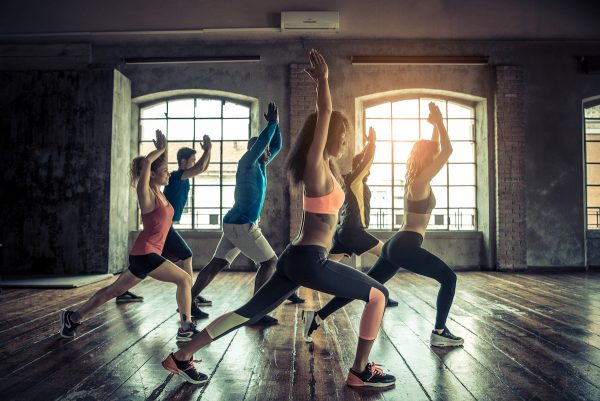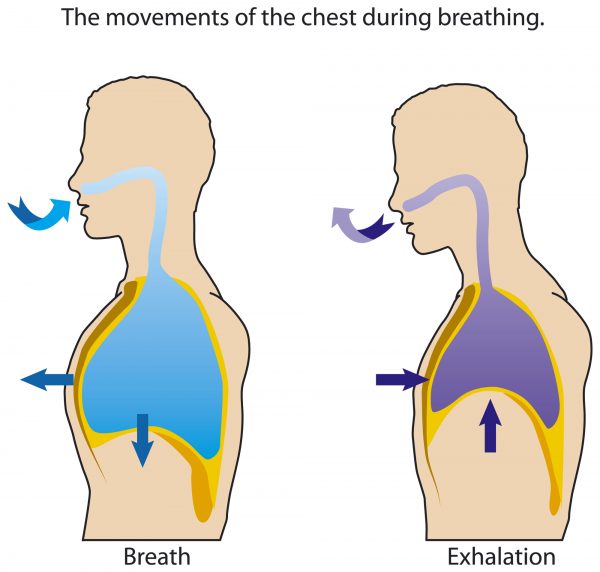Breathe In … and Out
The Art of Optimal Breathing for Dance
by Sally Harrison, Perfect Form Physiotherapy
Breathing truly is the foundation of life. It is the method by which we get the transfer of oxygen into our lungs for absorption into the circulation. It is also how we can control our life force or energy also known as ‘chi’ or ‘qi’. We can improve this life energy with simple breathing exercises. This concept also forms the foundations of yoga, meditation and tai chi.
Although breathing itself is obviously vital to our health, the way in which we breathe is also of essence to our health.
If we simplify this concept we can look at 2 styles of breathing 1) apical and 2) diaphragmatic. The former involves breathing into the upper chest region and is often shallower in nature. The second is diaphragmatic, or belly, breathing which is lower into the abdomen.
The optimal method is diaphragmatic breathing for many reasons outlined below.
Stimulation and activation of the core
The diaphragm is the ‘lid’ to the core unit and triggers the activation of both the pelvic floor and transversus muscles when we inhale. With the breath in, the diaphragm presses down on the abdominal contents pushing them gently down and out and stimulating the pelvic floor and transversus to contract in response to the stimulus. If we only breathe from the top of the lungs this mechanism is reduced greatly and therefore core activation reduced.
Organ health
The deep diaphragmatic breath will massage the abdominal organs gently promoting digestion and removal of waste. We can even see a gentle change in body height with our breathing. We gain some height with the in breath, and shrink a little with the out breath.
Feeding the calming system
We have several types of nervous system within the body. Two of these are opposing systems known as the parasympathetic and sympathetic systems. They have the general effects of ‘fight or flight’ (sympathetic) and ‘rest and digest’ (parasympathetic).
With regard to breathing, diaphragmatic breath feeds into the ‘rest and digest’ system so calming the body down, lowering BP heart rate and promoting recovery. Apical breathes on the other hand promote the ‘fight or flight’ response, therefore seeing an increase in heart rate, blood pressure, diversion of blood from the gut to the muscles.
It is good to be aware that if you are feeling stressed or your pressure is rising, if we stop and take a few deeper belly breaths we can calm our system quickly which will help not only physically but also mentally, and allow us to make better judgements and decisions.
Chronic stress, which is all too common these days, will lead to a ‘chronic fight flight’ response and the many detrimental health affects linked to this. Taking a tip from the yogis and focusing on calming belly breaths will help restore the balance.
Increase in flexibility
Breathing plays an important role in achieving greater flexibility. With correct attention to the body part to be released, and direction of the breath to these areas, results are far more profound. The use of breathing plays a vital part of treatment in the clinic setting, especially for muscle energy techniques and even manipulations. Shallow rapid apical breaths and their influence on the ‘fight or flight’ system will decrease flexibility as the body prepares to run or defend.
The spinal cord has even been shown to shorten in the spinal canal as a response to perceived stress. This again will reduce flexibility as we require our entire nervous system to be able to glide efficiently to its full extent with body movement. Shortening in the nervous system will be perceived as a loss of flexibility. Deep breaths can mobilise the rib cage and maintain flexibility throughout the trunk and keep the spinal nerves healthy and mobile as they exit the thoracic cage. This will have a profound effect on the flexibility of the neck and lower limbs also.
Breathing, recovery and dance
Breathing is vital for stamina throughout class or performance. The foundations of the belly breath should be employed in all areas of exercise. Deep belly breaths and nose breaths will help calm the system quickly, allowing for maximum energy in the next few bars of choreography. Being able to maintain fluid breathing and avoiding breath holding throughout a dance piece will help to reduce fatigue and even build-up of waste products within the tissues allowing you to dance for longer at a higher intensity.
Jumps, elevation and power
The correct use of breath can even have an effect on elevation and strength. Have you ever compared a jump or leap performed on the inhale and on the exhale? The correct use of the inhale will promote height, a sense of lightness and even the explosive power required for amazing aerial work. Breath work is the foundation for many martial arts and the primal root of the strength and force of these disciplines. If training in the gym setting or performing body weight exercises, a strong exhale will provide force and strength enabling you to lift/push and pull more. This needs to be applied with any partner work also.
In summary
- Breathe from the belly/diaphragm. Don’t splint the abdomen.
- Use the breath to your advantage in exercise to gain height, power and strength.
- If stressed, take some deeper breaths and calm the system before making decisions or even before a big audition/show.
- Breathe deeply into your stretches to gain maximum length that stays.
For more info see this short video:












